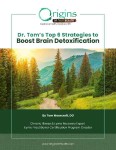An Osteopathic Approach to Cancer and Healing
by Thomas A. Moorcroft, D.O.
The science and philosophy of Osteopathy is a unique healing art that can be applied to cancer and healing. Osteopathic physicians are fully licensed physicians and surgeons who practice in all specialties and subspecialties in the United States. Osteopathic philosophy holds that each person is a unit of body, mind and spirit; structure and function are interrelated; and the body has self-healing properties. By further exploring these three primary tenets of Osteopathic medicine and discussing Osteopathic Manipulative Medicine, one is able to better understand how this healing science may be applied to cancer and healing.
Structure and function of the body are interrelated
Cancer develops when a few abnormal cells begin dividing too rapidly or when cells do not die at the appropriate time. A body that is functioning optimally has a much better chance of removing these abnormal cells before they become a problem. In cancer prevention and treatment, the most important structures seem to be those that make up the body’s internal cleansing system. The prime movers of this system are the venous and lymphatic systems. In contrast to the high pressure arterial system made up of arteries that have muscular walls allowing them to directly pump blood to its destinations, the venous and lymphatic systems are low pressure systems. These systems rely on external muscular contractions and changing pressure gradients to move deoxygenated blood and toxins to the cleansing organs. As an example, in health, the muscles of the pelvic floor move up and down during respiration like a bellows helping to create pressure gradients within the abdominal cavity that assists in moving venous and lymphatic fluids from the pelvic basin. If these muscles are tight and do not move effectively the result is stasis (a slowing or stoppage of the normal flow of a bodily fluid) of toxins and deoxygenated blood in the pelvis. Venous and lymphatic stasis may lead to many illnesses, including cancer.
Osteopathic Manipulative Medicine (OMM)
OMM is a form of hands-on diagnosis and treatment performed by a licensed physician, is used to help relieve strains that alter physical structure which assists the body in regaining optimal function. Osteopathic physicians undergo the same medical training as their M.D. counterparts, but also receive additional training in hands-on diagnosis and treatment. The major difference between OMM and many other hands-on modalities is that the Osteopathic physician is trained to evaluate the difference between a purely structural abnormality and a structural abnormality that is being caused by an underlying internal problem. For example, a structural abnormality found on physical exam, such as a tight muscle or a rib that is slightly out of place, may be due to a minor trauma or just sitting funny in front of the computer; however, it may also be due to irritation caused by a cancer or inflamed organ deep within the body. The Osteopathic physician is trained to tell the difference and is well versed in ways to treat the underlying cause and promote overall health.
Each person is a dynamic unit of body, mind and spirit
Rather than focusing on a specific disease process, Osteopathic physicians treat the whole person: body, mind and spirit. This is particularly important during the treatment of cancer or when creating a personal plan for optimal health. Physical, mental and emotional stressors weaken the immune system. Conventional medical treatments tend to focus on the physical aspects of disease, however, the Osteopathic approach seeks to promote health and overall well-being in all three of these areas. A diagnosis of cancer may lead to anxiety, anguish or even anger, all of which may be much more destructive to one’s overall health than the cancer itself. By taking the time to develop a personal relationship with each patient, the Osteopathic physician seeks to understand each patient’s unique health goals and is well-equipped to help the patient address the less tangible aspects of their medical care.
The body has the ability to heal itself
Osteopathic physicians believe that the body’s natural tendency is towards health and healing. While conventional medicine focuses almost entirely on the diseased part, the Osteopath acknowledges this part while also noticing the vast health within the body. By creating treatment plans that remove hindrances to the body’s natural healing mechanisms, Osteopathic physicians support the self healing process. Andrew Taylor Still, M.D., D.O., founder of the Osteopathic profession, believed “ it is the object of a physician to find health, anyone can find disease.” Rather than focus exclusively on a cancer, the Osteopathic physician additionally seeks to find and support health.
It is important to realize that healing and cure are not necessarily the same thing. Cure implies complete recovery from the disease. Healing, as defined by Merriam-Webster, means to make sound or whole, to restore to original purity. Observed from this perspective, a diagnosis of cancer may actually be the stimulus for profound personal transformation and healing. Taken from a conventional medical point of view, curing cancer is the ultimate goal. From an Osteopathic perspective, achieving optimal health and a balanced state of body, mind and spirit is the goal.
A diagnosis of cancer need not be a diagnosis of suffering and anguish. Working with a skilled Osteopathic physician, patients are able to take advantage of the latest advances in modern medicine while also stimulating the incredible healing power within.



